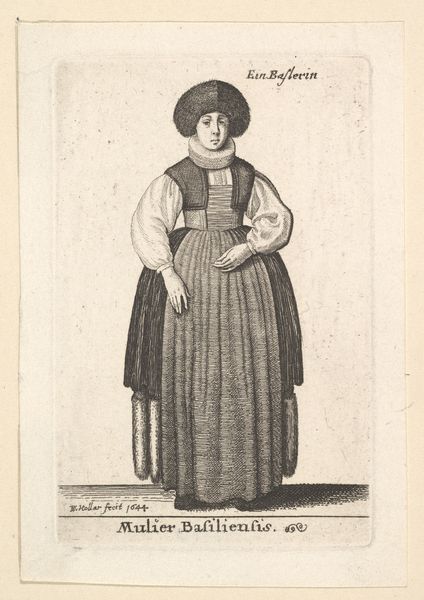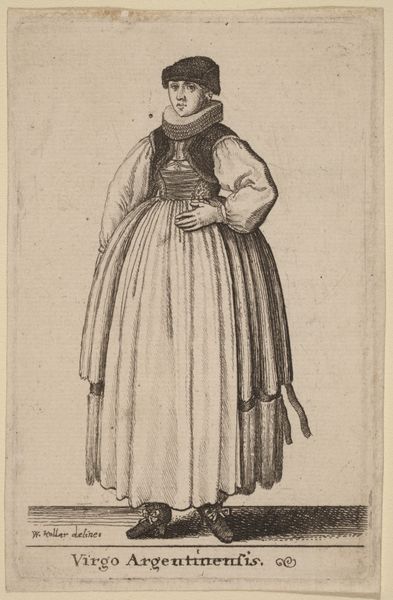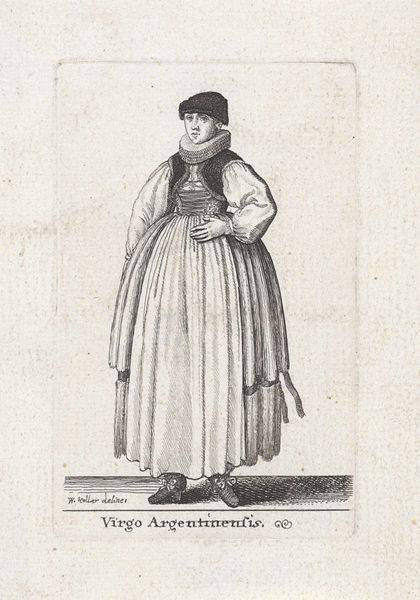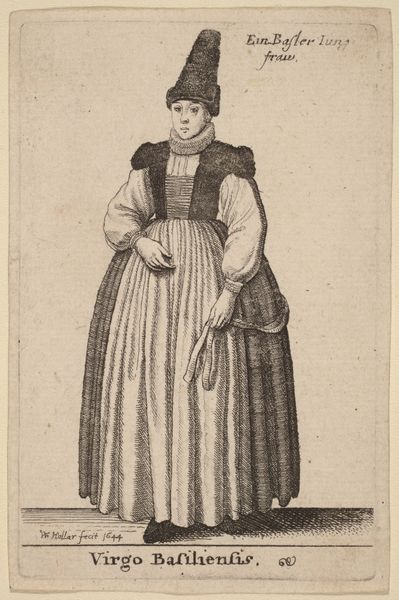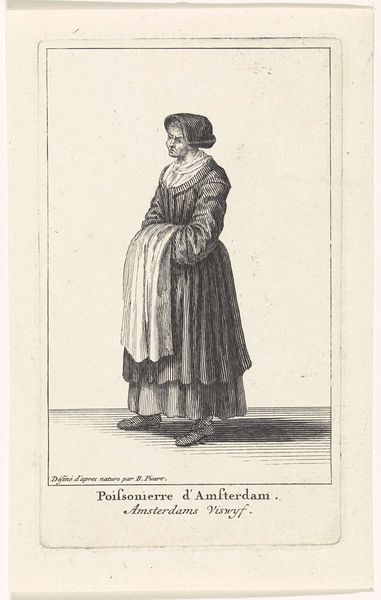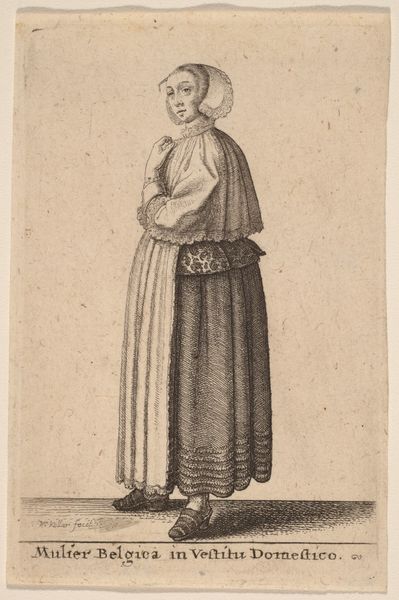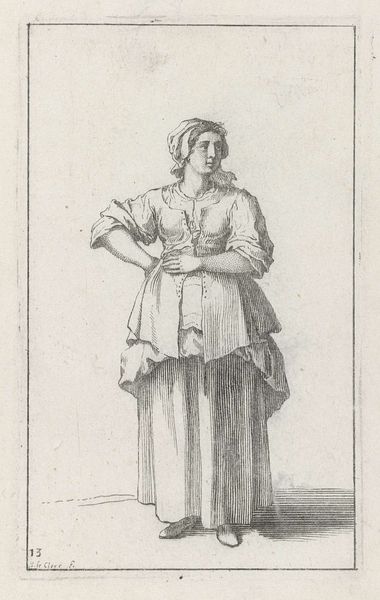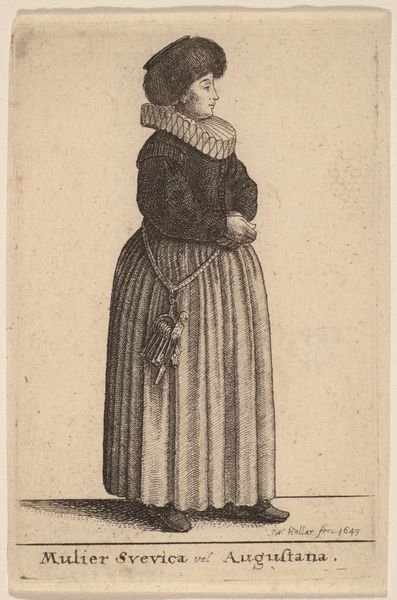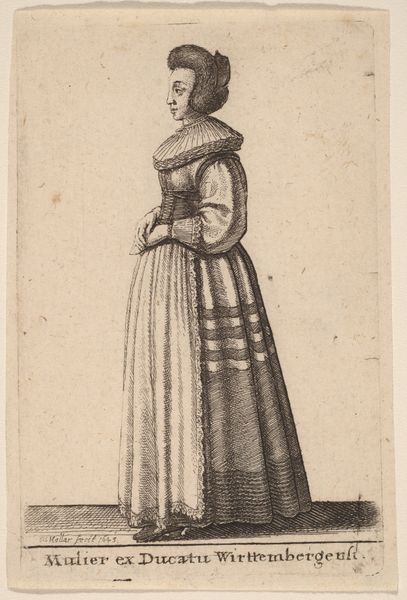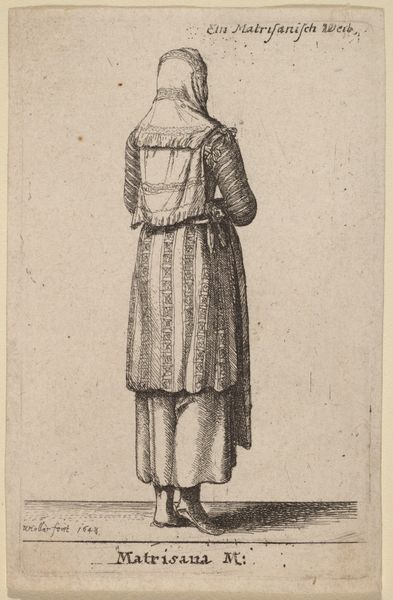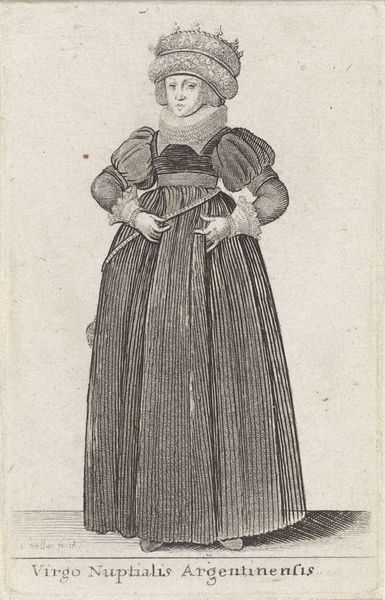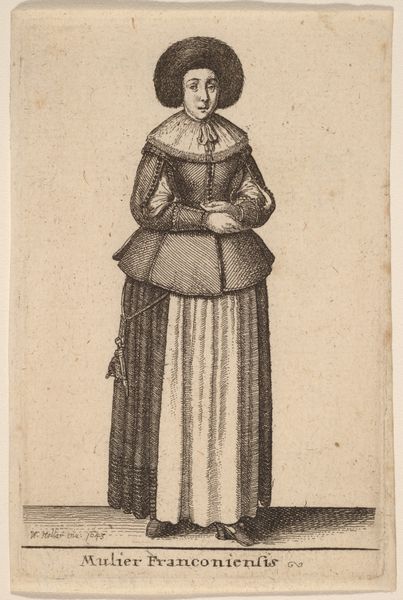
Virgo Argentinensis (Unmarried woman from Strasbourg) 1644 - 1816
0:00
0:00
drawing, print, engraving
#
portrait
#
drawing
# print
#
history-painting
#
northern-renaissance
#
engraving
Dimensions: Plate: 3 9/16 × 2 5/16 in. (9.1 × 5.8 cm)
Copyright: Public Domain
Curator: Looking at "Virgo Argentinensis," or "Unmarried woman from Strasbourg," an engraving by Wenceslaus Hollar, created sometime between 1644 and 1816. What strikes you first? Editor: The detail! Given it’s an engraving, I’m immediately drawn to how much texture and information Hollar conveys, especially in the layering of fabrics that define the dress. It almost makes me feel the weight of those textiles. Curator: Absolutely. The layering of fabrics isn’t just about texture, though; it speaks volumes about identity and status within 17th-century Strasbourg. The choice to depict an "unmarried woman" brings to the forefront discussions around women’s roles. How would this portrayal have reinforced or challenged societal norms around femininity at that time? Editor: I think examining the production would get us somewhere, too. Hollar, after all, was employed by aristocratic patrons; those patrons distributed these images broadly through prints like this one. It's really mass media meant to depict not only an individual but types of people from different regions, almost like an early form of anthropological cataloging. Curator: That's insightful! Thinking about it as "early anthropological cataloging" sheds light on the colonial gaze even within Europe at the time. Who gets to define whom, and what nuances get flattened in the process? The "Virgo" title underscores how the artwork’s meaning becomes intertwined with representations of female virtue and sexuality. Editor: Right, so how did these images serve their function, too, in promoting consumerism? Like look closely—you can almost count every stitch in her bodice. This attention to detail serves the patrons because viewers become not only informed but are pushed into the cycle of textile creation and consumption as well. Curator: Interesting. That tension you point out between idealization and practical application, beauty and labor, adds layers to the conversation. What starts as a simple portrait opens into considerations about regional identity, gender constructs, class structures and the circulation of visual culture within broader socio-political contexts of early modern Europe. Editor: Definitely something to consider as the role of images shifts further in this age. Curator: Precisely. Seeing these older works can only benefit modern dialogue around representation, exploitation and value within today's society.
Comments
No comments
Be the first to comment and join the conversation on the ultimate creative platform.
